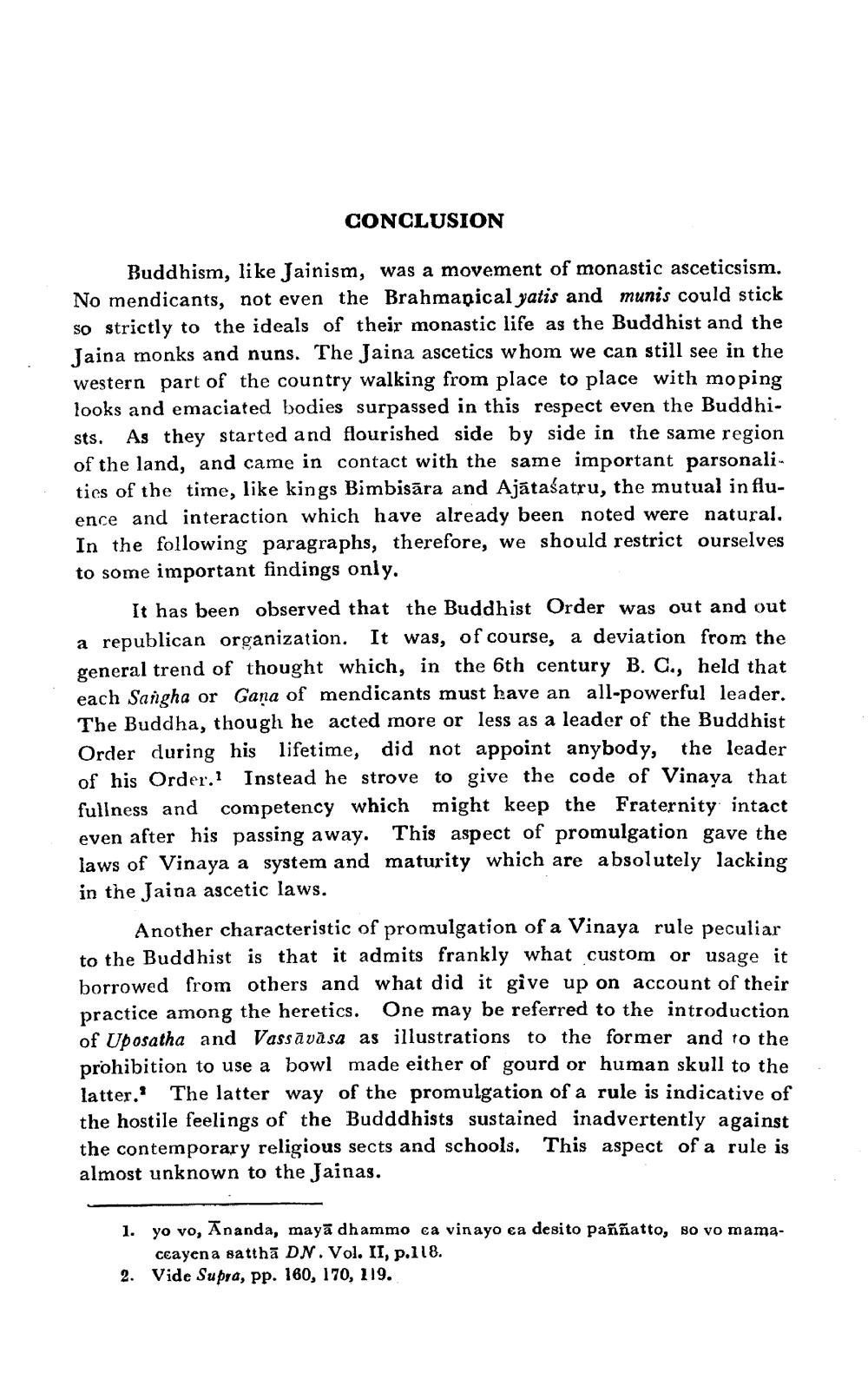________________
CONCLUSION
Buddhism, like Jainism, was a movement of monastic asceticsism. No mendicants, not even the Brahmapical yatis and munis could stick so strictly to the ideals of their monastic life as the Buddhist and the Jaina monks and nuns. The Jaina ascetics whom we can still see in the western part of the country walking from place to place with moping looks and emaciated bodies surpassed in this respect even the Buddhists. As they started and flourished side by side in the same region of the land, and came in contact with the same important parsonali. ties of the time, like kings Bimbisāra and Ajātaśatru, the mutual in fluence and interaction which have already been noted were natural. In the following paragraphs, therefore, we should restrict ourselves to some important findings only.
It has been observed that the Buddhist Order was out and out a republican organization. It was, of course, a deviation from the general trend of thought which, in the 6th century B. C., held that each Sangha or Gana of mendicants must have an all-powerful leader. The Buddha, though he acted more or less as a leader of the Buddhist Order during his lifetime, did not appoint anybody, the leader of his Order. Instead he strove to give the code of Vinaya that fullness and competency which might keep the Fraternity intact even after his passing away. This aspect of promulgation gave the laws of Vinaya a system and maturity which are absolutely lacking in the Jaina ascetic laws.
Another characteristic of promulgation of a Vinaya rule peculiar to the Buddhist is that it admits frankly what custom or usage it borrowed from others and what did it give up on account of their practice among the heretics. One may be referred to the introduction of Uposatha and Vassāvāsa as illustrations to the former and to the prohibition to use a bowl made either of gourd or human skull to the latter.' The latter way of the promulgation of a rule is indicative of the hostile feelings of the Budddhists sustained inadvertently against the contemporary religious sects and schools. This aspect of a rule is almost unknown to the Jainas.
1. yo vo, Ananda, mayā dhammo ca vinayo ca desito paññatto, so vo mama.
ceayen a satthā DN. Vol. II, p.118. 2. Vide Supra, pp. 160, 170, 119.




